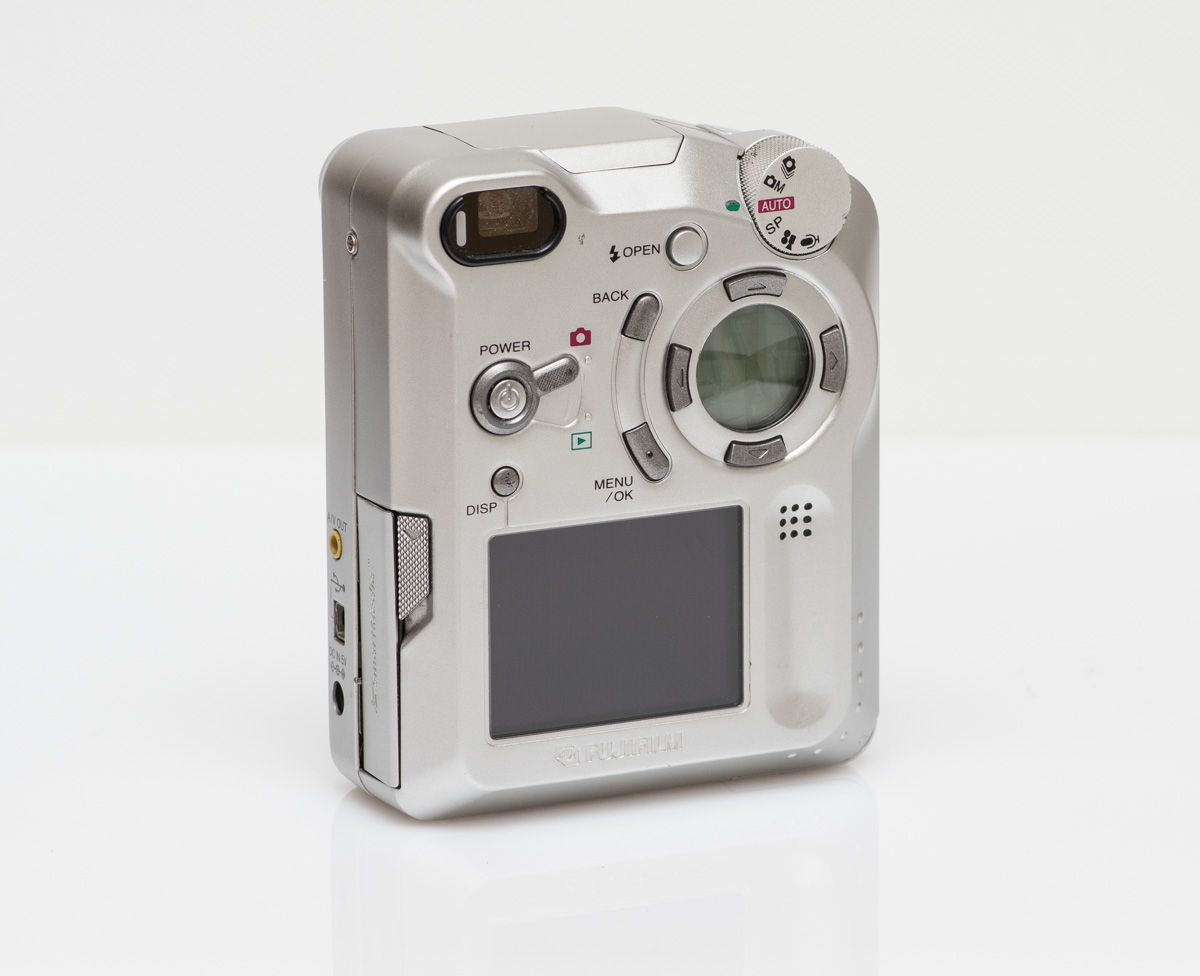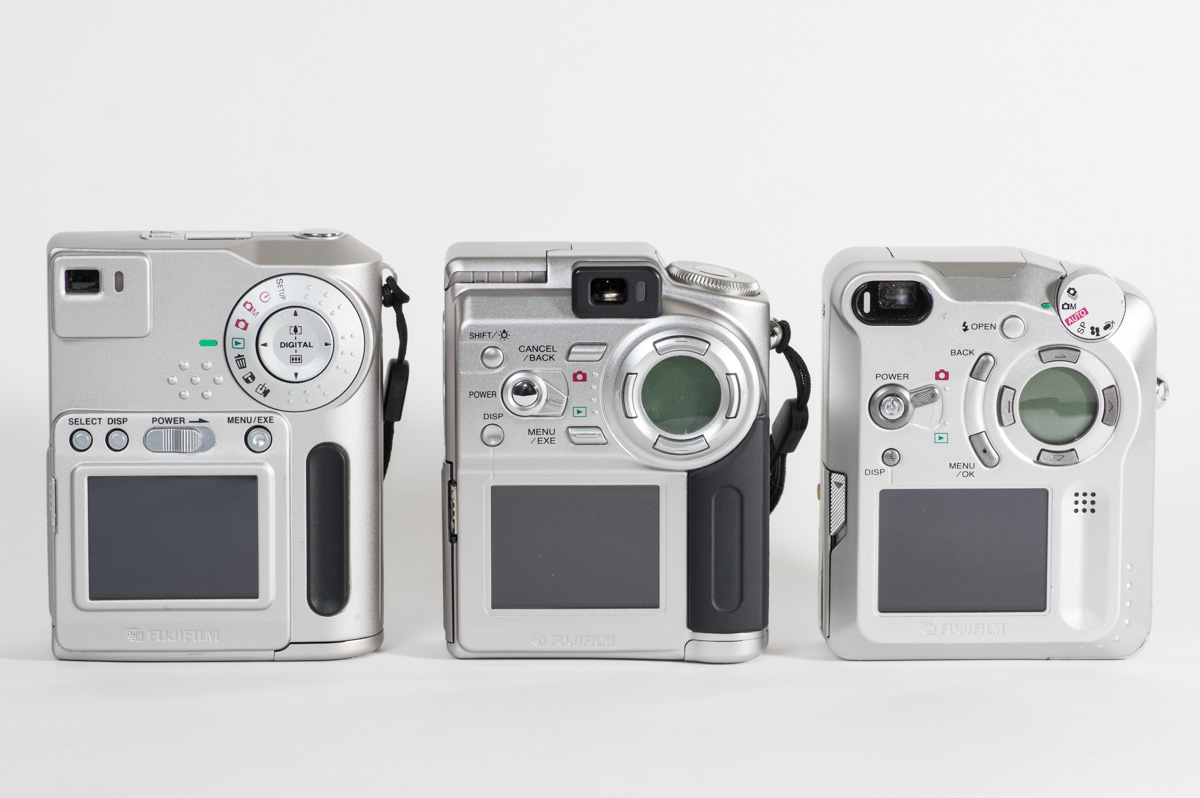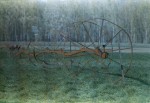Dec
29
2018


Lets be honest the Fuji 6800z cant be considered as a viable photography tool after 17 years but as an object of design it is interesting. It sits well outside the norms of how we expect cameras to look and function today. It wasn’t the first camera in the line to have this upright form factor but it was the last and arguably the nicest. The differences in design between it and the previous 4700z may be attributed to the use of an outside design firm F.A. Porsche and the choice to use higher quality materials. Briefly digressing to talking about it as a camera it used what Fuji referred to as a super CCD and as you may notice it doesn’t say how many megapixels it was on the outside which seemed like it was almost a bylaw for cameras at the time to have. This may be due to the fact that it used interpolation to go from its native 3.3mpixels to 6.6mpixels with a lot of debate and controversy to go with it.

From Left to right the Fuji Finepix 700, 4700 Zoom, 6800Z
Porsche Design has refined the vertically shaped design of the two FinePix cameras, ensuring improved grip for safer and more comfortable handling. Switches and other operational buttons are also clearly laid out on the back of the camera body, enabling all operations to be carried out using one hand in a truly user-friendly design. Other design improvements are apparent, too. For example, the small dot matrix LCD inside the four-direction button is brighter and thus easier to use than those in earlier models.

I don’t think that any camera companies would attempt a design like this today (2018). It strikes me as ironic that after the burst of different digital camera design ideas it has been the more traditional looking cameras that wouldn’t look out of place beside many film cameras that have won out. Even phones which are arguably the point and shoot cameras of today have settled into what looks like a single form factor with outlier’s being smacked down by the market.
no comments | posted in Cameras, Photography
Dec
22
2018

The problem with writing about older cameras is that there tends to be nothing new about them. That issue is multiplied by the number of versions of this particular camera that are out there. Personally I wouldn’t pay the prices some people ask for the Leica mini particularly because the same camera exists as the: Minolta Freedom Escort, Olympus Trip AF mini, Panasonic Super Mini, Blacks Sassy and possibly others and they tend to be had for far less money. However if you want a Leica and your on a budget here’s your camera.
 Notice how they say Leica design lens not that it is a Leica lens although if your using this camera and that matters to you then the question is “Why are you using this camera?” And because that doesn’t matter to me here are the obligatory pictures from it.
Notice how they say Leica design lens not that it is a Leica lens although if your using this camera and that matters to you then the question is “Why are you using this camera?” And because that doesn’t matter to me here are the obligatory pictures from it.
no comments | posted in Cameras, Photography
Dec
8
2018

The Minolta XE-7 is one solid camera, you can see that its outer shell is made of brass where the paint has worn away. Brass not being know for its light weight qualities. But even though its a hefty camera that is offset by the feel and operation. Of all the cameras I have ever owned or used it has the single smoothest film advance that requires the least effort. Another nice touch is a small window that allows you to see the aperture setting from the viewfinder, this feature made its way into the later Minolta X-700 which was my first SLR. One drawback of its electronic shutter is that it requires batteries to operate through its range of 4 seconds to 1/1000 second, Bulb mode can be used without batteries though. Fortunately it uses two easily attained LR44 batteries for power. It also has a viewfinder blind to block stray light if you are using Bulb. The shutter on the camera is a “CLS” or Copal Leitz which was a joint venture between the Japanese and German companies and results in a very quiet shutter that appears to be just as accurate today as it was 40 years ago. Other things that this camera has that give it almost everything you could need in an SLR is depth of field preview, exposure compensation and even the ability to do multiple exposures. This is done after the first exposure by sliding the lever found at the base of the film advance clockwise until a little red dot is visible. Then cock the shutter, the film will not have advanced and you can take the second exposure. The multiple exposure lever will return to its original place. You can do this repeatedly, cocking the shutter and exposing the film by moving the multiple exposure lever prior to each shutter cocking. So if your willing to pack around a 775gram film camera (without a lens) this is close to as good as it gets.
As for the film it was some extremely expired Fuji HG100 film. Being around 20 years out of date I figured my best bet was to expose it 2 stops slower so I set the camera to 24ASA. Even then I don’t think hitting it with more light helped greatly. It was just fogged and had a weird colour shift. That’s okay I meant to do that.
no comments | posted in Cameras, Photography















































